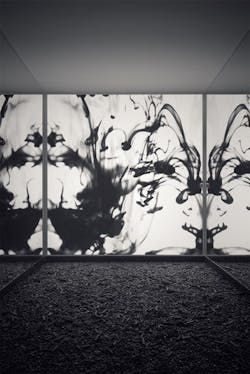Designers are Blurring the Lines Between Store and Showroom
As consumers seek out more personalized, bespoke and memorable shopping experiences, retailers are using design to blur the lines between store and showroom, showroom and art exhibit.
Each year, The Metropolitan Museum of Art’s iconic Costume Institute exhibition invites us to consider how material goods can be repackaged and displayed as art objects. This annual exploration of fashion and consumerism asks that we look beyond the original, intended purpose of the exhibited items and consider them as important pieces of visual culture.
The marriage of art and retail found in the summer 2019 Louis Vuitton/Virgil Abloh pop-up in Chicago’s West Loop neighborhood comes immediately to mind. Today’s consumers are hungry for shopping experiences that can cater to their emotions, rather than just their wallets.
(Photo: MoKe Experience Pavilion, designed by Update Studio, was the 2018 IIDA Global Excellence Awards Showrooms & Exhibition Spaces winner. Credit: Update Studio)
As a result when developing new spaces, retailers are paying close attention to the correlation between in-store aesthetics and experiential elements and their business. Dynamic, museum-like and multi-purpose environments made to draw people in for more than just purchases are on the rise.
The Museum Treatment
In the spirit of displaying goods as artful objects, the newest European showroom for footwear brand Birkenstock was designed by studio Vinson&Co inside an impeccably-furnished Paris apartment.
Shoes are displayed in each room as though they are decorative elements and the cozy yet design-forward setting serves as a distinct backdrop for the products.
Instead of simply putting products on view, shoes become part of a cohesive brand experience in this showroom, while shoppers get to explore a beautiful, interesting space.
In a more avant-garde example from Beijing, the Experience Pavilion and flash store for MoKe, an ink brand focusing on “the young generation of literati,” was designed by Update Studio as a place to participate in the culture and aesthetic sensibilities of the brand.
[Read also: RxArt Comforts Young Patients With Imaginative Art for Children’s Hospitals]
More than just a pop-up, the pavilion is an exhibition space, complete with an “auditory experience” area with black cobble floors and an in-house tattoo parlor.
The pavilion's innovative design earned Update Studio a 2018 IIDA Global Excellence Award in the Showrooms & Exhibition Spaces category, with judges praising the “poetic and fully-immersive environment” that “transforms the senses.”
Showrooms and pop-ups aren’t the only types of retail space receiving the museum-treatment. Many permanent stores are beginning to take on artful aesthetics in unexpected ways, further blurring the lines and setting new standards for the kinds of retail experiences consumers can expect.
In west London, the recently opened The Drug Store, the first brick-and-mortar space for the brand, is situated inside of a townhouse once serving as an exhibition space for the artist Damien Hirst.
Offering a range of CBD products across two floors, the shop is minimalist and gallery-like, heavily utilizing the warm color palettes and clean interiors millennial consumers are often drawn to.
(Photo: MoKe Experience Pavilion, Update Studio, 2018 IIDA Global Excellence Awards Showrooms & Exhibition Spaces winner. Credit: Update Studio.)
Creating Memorable Experiences
With unique experiences and engrossing interiors becoming central to consumer values, a brand’s ability to create memorable retail spaces is key to the survival of their physical locations.
By following the immersive design and unexpected display approaches practiced by art and culture institutions around the world, retails can revitalize purchasing power.
About the Author:
Irena Frumkin is a copywriter and editor for IIDA. She holds degrees in art history from the School of the Art Institute of Chicago and Temple University.
